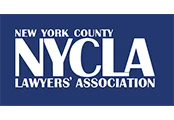According to the state of New York, reckless endangerment is
“being aware of a risk that an action may cause another person a serious injury and consciously ignoring that risk”. In other words, behavior that puts others lives, safety or property at risk, regardless of intent or outcome can be considered reckless endangerment.
Types of Reckless Endangerment
- Reckless Endangerment in the First Degree: Class D felony. According to the New York Penal Code, this charge applies when someone recklessly engages “in conduct that creates a grave risk of death to another person under circumstances which evince a depraved indifference to human life.”
- Reckless Endangerment in the Second Degree: Class A misdemeanor. Reserved for “conduct which creates a substantial risk of serious physical injury to another person.”
- Reckless Endangerment of Property: Class B misdemeanor. Applies to causing $250 or more of damage to the property of an individual or business.
- Reckless Assault in the Second Degree: Class D Felony. This charge is often added to reckless endangerment charges when an individual, bystander, peace officer, or third party has been injured.
Regardless of whether your charge is considered a felony or a misdemeanor, all of these charges are serious and have the potential to negatively impact your life in the long term. Even something as seemingly innocuous as pulling someone’s hair while they are driving can be considered reckless endangerment under the law.
In the 2012 case of People v. O’Connor, 953 N.Y.S.2d 552, that’s exactly what happened. Miss O’Connor was sitting in the passenger seat when she got into an argument with the driver of the vehicle and decide to pull the driver’s hair. While this might sound like a juvenile prank, the court ruled that O’Connor had endangered the driver as well as pedestrians and other drivers on the road.
O’Connor was convicted of second degree reckless endangerment.
Can I Go To Jail for Second Degree Reckless Endangerment?
Yes, you can.
Although it is a misdemeanor, second degree reckless endangerment can come with some pretty heavy consequences, even for first time offenders. If you have been charged with second degree reckless endangerment, immediately seek professional legal assistance, preferably from a lawyer that specializes in reckless endangerment.
Some of the legal consequences you might be faced with include incarceration (jail time), probation, community service, and or fines and fees. Let’s examine each of these in a little more detail.
Incarceration / Jail Time
As a Class A Misdemeanor, second degree reckless endangerment can carry up to one year of jail time, typically in a local facility.
Probation
Probation is a common sentence for those found guilty of Second Degree reckless endangerment. Unfortunately, judges can sentence you to up to three years probation. During this time, there are many rules you are required to adhere to, like reporting regularly to your probation officer, paying your $30 per month probation fee, abstaining from drugs and alcohol, and maintaining a job. Failure to comply with any of these strictures can land you in state prison, even if you are a first time offender!
Community Service
You could be assigned up to 200 hours of community service.
Fines, Fees and Restitution
You could be ordered to pay a fine of up to $1000 and restitution of up to $10,000 dollars, in addition to court costs and attorney fees.
Other Associated Outcomes
In addition to the mental and emotional impact of incarceration, employers may be unwilling to give you the benefit of the doubt when you have any conviction on record, regardless of severity. The best way to ensure a bright future is to avoid a conviction in the first place by seeking out expert legal support. Don’t be mislead. Being convicted of a crime is no laughing matter.



















